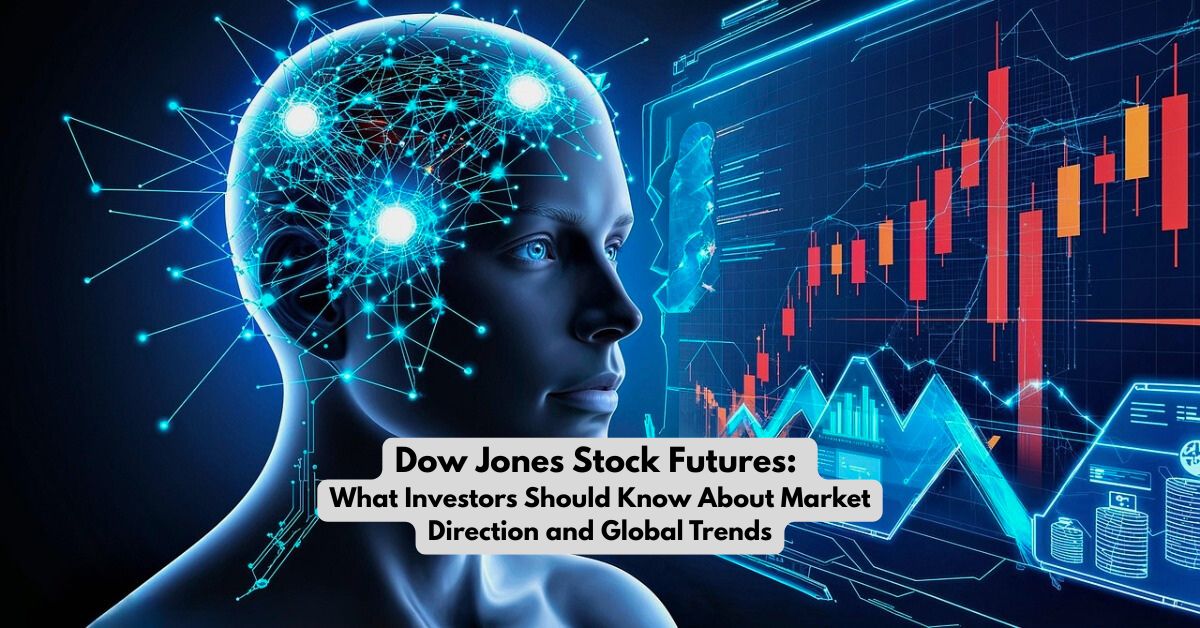The Dow Jones stock futures continue to play a key role in how traders and investors read the pulse of the U.S. economy. These numbers often serve as the first clue to where Wall Street is headed before the market even opens.
In 2025, the financial world is being shaped by changing interest rates, new technology, and evolving global conditions. The Dow Jones remains a reflection of that movement — a trusted measure of how confident or cautious investors feel about the future.
Let’s take a closer look at what’s influencing Dow Jones stock futures this year, why they matter, and how you can use them to make smarter investment choices.
Understanding Dow Jones Stock Futures
In simple terms, Dow Jones stock futures are contracts that allow traders to speculate on where the Dow Jones Industrial Average (DJIA) will move in the near future.
They trade before the U.S. market officially opens and act as a forecast of investor sentiment. If futures rise, it usually means optimism about the day’s trading session. If they fall, investors may be bracing for bad news, weak earnings, or global uncertainty.
In other words, Dow Jones futures are a sneak peek at how investors expect the economy and stock market to behave in the hours ahead.
What’s Moving Dow Jones Stock Futures in 2025
Several powerful forces are currently shaping the direction of Dow Jones stock futures. Here are the biggest influences this year:
1. Federal Reserve Policy Changes
Every decision or comment from the Federal Reserve has an immediate impact. Any sign of rate cuts or increases can shift Dow futures dramatically overnight, especially in sectors tied to finance and tech.
2. The Rise of AI and Technology Stocks
Artificial intelligence, chip manufacturing, and automation are pushing tech stocks higher. Many Dow companies are investing heavily in these areas, making futures sensitive to tech news and innovation trends.
3. Corporate Earnings and Quarterly Reports
Strong corporate results from major players like Apple, Caterpillar, and Goldman Sachs tend to lift futures, while weaker reports trigger caution across the board.
4. Global Economic Shifts
Economic data from regions like China or Europe often sway Dow Jones futures. Global trade performance, inflation reports, and political stability all factor into the equation.
5. Election-Year Market Behavior
Political developments in 2025 are also adding uncertainty. Changes in policy expectations, especially around energy and taxation, often lead to short-term market swings.
Why Dow Jones Stock Futures Matter
Investors and analysts track Dow Jones stock futures because they provide an early signal of what to expect when markets open.
For day traders, futures offer short-term insights for strategy planning. For long-term investors, they reflect the broader mood of the financial landscape.
Watching futures doesn’t just prepare you for the trading day — it helps you understand how global news and investor psychology affect market direction.
How to Interpret Dow Jones Stock Futures
You don’t need to be a financial expert to make sense of futures data. Here’s a simple way to read them:
- When Futures Rise: It suggests optimism. Traders expect better earnings, stable interest rates, or positive news from major companies.
- When Futures Fall: It points to caution. There could be concerns about inflation, economic slowdowns, or poor financial reports.
- When Futures Are Flat: It means investors are waiting for key announcements, like jobs data or Federal Reserve statements, before taking a position.
By tracking how Dow Jones stock futures react to news overnight, you can anticipate how the broader market may perform once trading begins.
Technology, AI, and the New Market Landscape
The modern stock market moves faster than ever, largely due to AI trading systems and data-driven analysis. These tools scan global headlines, interpret sentiment, and place trades in seconds — often causing immediate shifts in Dow Jones stock futures.
AI and Market Predictions
Artificial intelligence is now used to predict patterns, manage portfolios, and even execute trades automatically. This means market reactions are faster and often more volatile, especially around big events.
Green Energy and Industry Growth
As the world transitions toward renewable energy, several Dow-listed companies are shifting strategies to align with sustainability goals. Investors watch these moves closely, as they can influence long-term Dow performance.
Global Supply Chain and Trade Recovery
Manufacturing and logistics improvements continue to shape industrial sectors within the Dow, helping stabilize performance after several years of global disruptions.
Smart Ways to Use Dow Jones Stock Futures
You don’t have to trade futures directly to benefit from them. Here’s how savvy investors use them for better planning:
- Gauge Market Sentiment: Check futures before the opening bell to understand the overall mood.
- Adjust Your Portfolio: Use trends in futures to decide when to buy, sell, or hold.
- Hedge Risk: Futures can help balance exposure during uncertain economic periods.
- Track Institutional Moves: Large investors and funds often signal their strategies through early futures trading.
Knowing how Dow Jones stock futures behave can give you a significant edge in timing your investments.
Outlook for Dow Jones Stock Futures in 2025
Looking ahead, analysts expect steady but cautious growth across the Dow Jones. The focus remains on how companies handle innovation, cost control, and global challenges.
Key areas to watch include:
- Expansion of AI-driven industries
- Gradual interest rate adjustments by the Federal Reserve
- Oil price movements and energy policy
- Consumer confidence and retail performance
While some volatility is expected, experts believe the Dow will maintain a stable upward trajectory through late 2025, supported by strong tech and financial sectors.
Conclusion
The Dow Jones stock futures are more than just pre-market indicators — they’re a real-time reflection of global sentiment and investor confidence.
In a rapidly changing financial environment, keeping an eye on these numbers helps you make better-informed choices and stay ahead of market turns.
Whether you’re an active trader or a long-term investor, tracking Dow Jones stock futures gives you a clearer view of what’s next for Wall Street.
Frequently Asked Questions (FAQ)
Q1. What are Dow Jones stock futures?
They’re financial contracts that reflect the expected future value of the Dow Jones Industrial Average, offering insight into market direction before trading begins.
Q2. Why do Dow Jones stock futures move before the market opens?
They react to international markets, overnight earnings reports, and global economic news that occur outside U.S. trading hours.
Q3. Are Dow Jones stock futures reliable indicators?
They’re not perfect predictors, but they give a strong early signal of investor expectations and short-term sentiment.
Q4. How can I track live Dow Jones stock futures?
You can view them on major financial sites like Bloomberg, CNBC, Yahoo Finance, or TradingView for real-time updates.
Q5. Should beginners trade Dow Jones stock futures?
Futures trading carries significant risk and is best suited for experienced traders. New investors should use futures mainly for observation and strategy planning.




